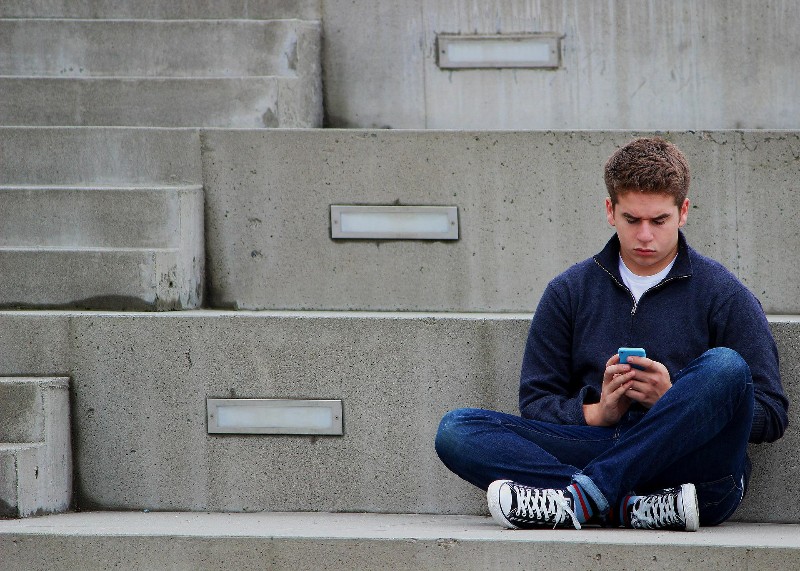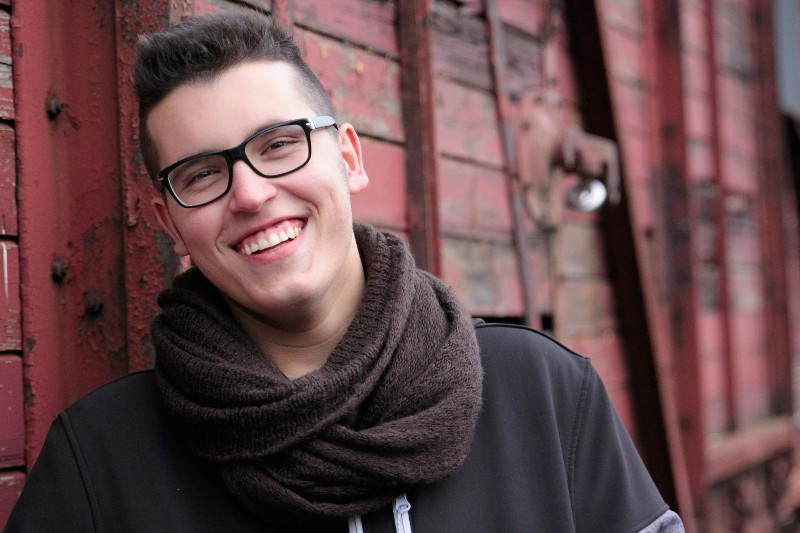A receding hairline at 16 can come as quite a shock. As teenagers, image is important and it’s natural to worry about people’s reaction to early baldness.
If you’re a teenager and you’re worried about a receding hairline, you’re in the right place. The first thing to know is that you’re not alone and that it’s more common than you might think.
You’ll want to know why it’s happening. This way you know whether it’s something that can be slowed, stopped altogether, or even reversed.
Read on to find out what your options are and how you can stop your hairline receding as a 16-year-old.
What hairline changes are normal for a teenager?
It may come as a shock to discover you have a receding hairline at 16, but the first thing to know is that it’s incredibly common.
Lots of people start to wonder if they’re on a path to baldness when they notice they can see their scalp through their hair. It’s not always the case, but it’s perfectly normal to start receding in your mid-teens.
Around 16% of teenage boys aged 15-17 experience male pattern baldness to some degree. It can happen for a variety of reasons and doesn’t necessarily mean you’ll go completely bald.
It’s also worth checking that you are actually receding. Many people develop a more mature hairline in their teens which then remains the same for life. Some people are also born with an uneven hairline (where the hairline is asymmetrical) and you may not notice this until your teens.
However, genuine male pattern baldness can be a worrying experience, especially if it’s noticed by your friends, classmates, and others around you. Some people even have a phobia of going bald. For a lot of teenagers who don’t have an actual phobia, it’s still their biggest fear.
But trust someone who knows – worrying about being bald is far worse than actually being bald.
It’s honestly not that bad when it happens, you just accept it, get on with life and count all the money you save on haircuts (keep buying the shampoo, though).
Despite this, it’s natural to be self-conscious and to want to find out how to stop a receding hairline at 16.
Three options for a receding hairline at 16
If you notice your hairline receding at 16, you can choose one of three options.
Firstly, you can leave it as it is. Rock the receding look and choose a more flattering haircut. The trick here is to keep it short. Longer styles give more weight to the hair and pull it away from the scalp, making any thinning on top more obvious.
Next, you can shave it. Show that you’ve embraced it and that you’re not embarrassed. If you are being teased by any small-minded classmates, this is the best way to show them you don’t care.
Lots of young men worry that women won’t like them if they’re bald, but one piece of advice has always stuck with me. Some women find bald men unattractive, most women find balding men unattractive.
A man who is confident enough to shave it off is always sexier than one who tries to cling onto his hair for too long.

If you’re considering it, here are a few things you need to know before shaving your head for the first time. If you’re worried that it won’t suit you, this might help: What would I look like bald?
Finally, you can treat it. I’ll explain how to stop a receding hairline at 16 with various medical options, but first, it’s important to understand why it’s happening.
What causes a Receding hairline at 16?
You may be wondering, “Why do I have a receding hairline at 16?” Causes of a receding hairline at 16 include hormones, stress-related causes, and a variety of medical conditions. Sometimes it’s just a natural part of getting older.
Here are some of the most common causes:
Alopecia
First up, hair loss at 16 is often just down to natural causes. Androgenetic alopecia, or pattern hair loss, affects teenage boys and girls. It’s caused by hormones called androgens which are a normal part of sexual development.
Teenage boys can experience the first signs of male pattern baldness even in their early teens, while pattern hair loss in girls isn’t uncommon as they go through puberty.
There’s also alopecia areata which causes more ‘patchy’ hair loss. This is what most people probably think of when they see the word ‘alopecia’ as opposed to male pattern baldness, for example.
It’s been speculated that alopecia is the reason Jacob Batalon is bald. The actor, who plays Ned in the Spider-Man movies, wears a wig on screen but fully shaves his head for public appearances.
The condition is also the reason Alex Youmazzo is bald, and the model and social media influencer has done great work to raise awareness.
However, this is more recognizable as distinct patches of baldness all over the scalp, with normal hair around the affected areas. Alopecia areata isn’t the cause of a receding hairline.
In both male and female patients, doctors will often advise the use of medications to help slow or stop the process of hair loss altogether (keep reading for more details).
Note: Hair transplants are a permanent solution that is also becoming more popular for men and women. They’re not as painful as you might think, and are more affordable than most people assume.
While none have publicly admitted it, there are a number of female celebrity hair transplant patients who turned to the surgery having suffered from traction alopecia and other conditions.
Medication
According to Mercke, Sheng, Khan, and Lippman, “Medication-induced alopecia is an occasional side effect of many psychopharmaceuticals. Most of the mood stabilizer and antidepressant drugs can lead to this condition.” (Source)
Rising levels of depression in teenagers and increased awareness of mental health issues mean that the average 16-year-old is much more likely to take antidepressants now than ten years ago. In fact, antidepressant use in 12-17-year-olds in England more than doubled between 2005 and 2017.
Because the side effects of these drugs include medication-induced alopecia, it’s becoming more common for young people to experience a receding hairline at 16.
Hormones
As a teenager, you’re constantly experiencing changes in hormone production.
According to a scientific study by Maya Vincent and Krishnan Yogiraj, “disorders such as hypothyroidism, hyperthyroidism, and parathyroid disorders can cause hair loss.”
The study explains how the thyroid hormone is responsible for the proper maintenance of hair follicles. The disorders described above can result in the hair follicle not working as it should, leading to hair loss.
As a result, the study found ‘significant association’ between premature graying and hair loss. The hormonal changes every 16-year-old experiences are directly linked to hair loss.
Stress
According to The National Institutes of Health, removing the stress hormones from mice stimulated rapid hair regrowth compared to a control group that did not undergo the same process.
Those same stress hormones had been causing the cells underneath the hair follicle (called the dermal papilla) to grow less hair.
Another symptom of stress is shallow breathing, which means your body is getting less oxygen. This lack of oxygen also affects the dermal papilla and its ability to maintain your hair.
As a 16-year-old, you’re exposed to stress to a disproportionate level. Whether this comes from social pressures or whether the intense school and exam schedules are contributing, it’s one of the most stressful periods of any person’s lifetime.
Thankfully, it’s not permanent – and neither is the hair loss that comes with it. Once our stress levels reduce, we can completely or partially regrow the hair we lose.

Medical conditions
If you’re not experiencing stress and you’re not taking medication, it’s worth seeing a doctor if you’re concerned about hair loss.
While it may simply be a natural hormonal reaction, there could be an underlying medical condition that hasn’t been diagnosed. These can range from fungal skin infections and autoimmune diseases, all the way to STIs and even pregnancy!
However, your doctor may also ask about your eating habits…
Diet
One factor in hair loss at 16 that is easier to control than those mentioned above is diet.
What you put into your body heavily influences how it functions, from bowel health to mental health and everything in between.
Your hair is no different. As a 16-year old it can be easy to think you’re in good shape. Only people older than you need to worry about eating a healthy diet, right?
This kind of thinking is a recipe (haha) for disaster for your hair. This article by Emily L. Guo and Rajani Katta explain that “Nutritional deficiency may impact both hair structure and hair growth”.

It’s not just nutrient deficiencies that cause hair loss either. The article states that “Over-supplementation of certain nutrients, including selenium, Vitamin A, and Vitamin E, has actually been linked to hair loss”.
Foods that include high levels of vitamin A include milk and eggs. Vitamin E is found in a variety of foods including avocado, peanuts, and some fish. Beef, chicken, and shellfish contain high levels of selenium.
These foods aren’t necessarily unhealthy in themselves, they just need to be eaten as part of a balanced diet. Too much or too little of the wrong foods will always lead to health issues, including hair loss.
Another factor is obesity. Doctors rightly encourage overweight teenagers to lose weight, but it’s important this is done in a healthy way.
Crash dieting at 16 not only reduces your calories but also your intake of nutrients that keep your hair growth healthy. Iron deficiency is strongly linked with hair loss.
Hair breakage
Teens are often the most image-conscious of all of us. As a result, they have a tendency to over-style, which can cause hair to be damaged and even lead to excessive breakage.
This isn’t technically hair loss in the way we think about Male Pattern Baldness. However, where a receding hairline or thinning crown is happening, hair breakage makes it more obvious. Healthy hair that would otherwise cover the majority of hair loss isn’t there anymore, making balding more visible.
This is especially true of people with curly hair. Curls are more prone to tangling and are harder to style. As a result, excessive detangling, brushing and styling leads to hair breakage, making it appear as if people with curly hair go bald younger and quicker.
How to stop a receding hairline at 16
If you’ve consulted your doctor and they’ve ruled out any temporary factors such as stress, medical conditions, and diet, they may advise on the use of medication to treat a receding hairline.
It’s unlikely that a doctor would recommend surgical treatment, especially for a 16-year-old. According to the Miami Hair Institute, this is because it is “very difficult for a hair transplant surgeon to accurately predict how the hair loss of a teenage patient will progress”.
There have been strong rumors that David Beckham had a hair transplant around 2018, but he would have been in his early-to-mid-40s at the time.
Without being able to predict the progression of hair loss at this early stage, the risk is that the transplant ends up looking very unnatural. It can also leave bald patches in unexpected areas of the scalp as the spread of male pattern baldness continues.
In terms of medication, the two main options are Minoxidil and Finasteride.
What is Minoxidil used for?
Minoxidil is the active ingredient in Rogaine. It is used by both men and women to treat hair loss caused by a variety of factors. It is applied using drops or foam and massaged into the scalp using the fingertips.
What is Finasteride used for?
Finasteride is taken in tablet form and is used to treat enlarged prostate in men. Because it works by restricting the production of dihydrotestosterone (DHT), which shrinks hair follicles, it is also an effective hair loss treatment.
There are a number of pros and cons to taking hair loss medication at 16. The two main areas for consideration are the effectiveness of the medication and the potential negative side effects.
Note: There are a number of DHT blockers on the market, including vitamins and shampoos. Before you try them, make sure you’re aware of the side effects of DHT blockers.
How effective is hair loss medication?
Minoxidil takes around four months to show noticeable results, while Finasteride is reported to take roughly the same amount of time.
In general, hair loss medications can be very effective. However, they don’t work for everyone. They also require continuous use, meaning that when you stop taking them your hair loss will continue.
Neither Minoxidil nor Finasteride is 100% effective, but the science is encouraging. The key is not to expect full regrowth and instead aim for improvement, rather than cure.
One study found that 66% of men experienced some regrowth of hair after two years of continuously taking Finasteride. Another concluded that Minoxidil had been at least ‘moderately’ effective in 84.3% of patients.

What are the dangers of hair loss medication?
Hair loss medication can have side effects ranging from trivial conditions such as Eczema and redness to more worrying issues including a decreased sex drive and low blood pressure. As a result, using Minoxidil or Finasteride isn’t a practical solution for everyone.
The most common side-effects of Minoxidil are a dry, itchy, and painful scalp, which can lead to flaking and redness. Taken orally, Minoxidil can cause fast or irregular heartbeat, headaches, nausea, and vomiting.
This is due to Minoxidil’s other use as an antihypertensive, or blood pressure medication. Whether taken orally or absorbed through the scalp, the drug causes changes in a person’s blood pressure. This can lead to the symptoms mentioned above.
The most common side-effects of Finasteride are erectile dysfunction and ejaculation disorders in young men, while women can experience tenderness in the breasts.
The reason male patients can experience erectile dysfunction after taking Finasteride is that the drug decreases dihydrotestosterone (DHT).
DHT is a hormone that is created in men when the testes process testosterone, but it also causes hair follicles to shrink. Finasteride restricts the production of the hormone, but crucially it is also responsible for the proper development of the male genitalia during adolescence.
Reduced DHT can also therefore decrease libido and cause erectile dysfunction, but this goes away once patients stop taking Finasteride. Unfortunately, hair loss is then allowed to continue due to the absence of the DHT-blocking drug.
Finasteride also commonly causes skin rashes, swelling of the lips, and testicular pain, amongst other symptoms described in this study by Gupta, Sharma and Shukla.
Summary
There are a number of potentially serious side effects to taking hair loss medication. However, studies report that they are not particularly common, and serious conditions are even rarer.
Anyone who really wants to stop a receding hairline at 16 can consider taking Minoxidil or Finasteride. Just be sure to consult a doctor first.
However, it’s worth noting that unless you plan to take the medication for the rest of your life, you’re really only delaying the inevitable. As soon as you stop taking the drugs, your hair loss will resume.
Personally, I recommend managing the situation in a more natural way. Choose a short hairstyle that minimizes the appearance of balding, and as your hairline continues to recede simply progress to a buzz-cut.
This way everyone can see that you’re not in denial and that you’re not trying to hide what’s happening. You’re comfortable with your hair loss and you have the confidence to brave the shave.
Of course, that’s easy for me to say. I’ve had 20 years to get used to the fact that I was going to be bald for life. This is a big ask given all the social pressures that come with being a 16-year-old.
One thing I can promise is that it won’t be as bad as you think. If you worry about it too much, you’ll build it up to be a bigger deal than it needs to be.
If you gradually progress to shorter haircuts, by the time you start shaving your head people will barely notice. This slow progression will also be easier for you to get used to than a drastic change from long hair to an extreme buzz-cut.
And if you need help with your appearance along the way, check out my article on how to look good bald.

